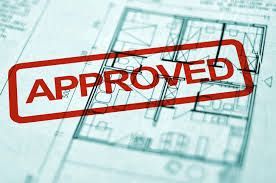What Are Building Regulations?
Building regulations approval

Building regulations approval sets out the basic standards for designing, constructing, and modifying buildings. These standards apply to new construction projects, as well as to extensions or alterations to existing structures. They are established by the UK government and must be approved by Parliament. Approval is granted in the form of a document confirming compliance with these standards. Since 2010, there have been supplementary 'Approved Documents' providing guidance for construction and extension projects. It is important to note that building regulations approval differs from planning permission. While planning permission focuses on the appearance and use of a building, building regulations are concerned with the building's performance in terms of factors such as thermal efficiency, structural stability, and fire safety. In some cases, both planning permission and building regulations approval may be required for a project. Applications for building regulations approval are processed by the building control department of a local authority or by an Approved Inspector. It is crucial to adhere to the various limitations and specifications. At Architecture 365, our skilled and friendly team is well-equipped to navigate this process as part of our comprehensive service.
THE BUILDING REGULATIONS
In the Building Regulations, the following technical ‘parts’ have the aforementioned Approved Documents to support them:
A. Structure - guidance on structural stability/integrity and safety
B. Fire safety*- means of escape, isolation of fire, firefighter access, warning systems
C. Site preparation and resistance to contaminants and moisture - protection from bad weather and dangerous substances
D. Toxic substances - guidance on providing a barrier in a cavity wall to prevent harmful fumes from entering a property
E. Resistance to the passage of sound - in homes, schools and flats
F. Ventilation - building air quality and preventing condensation
G. Sanitation, hot water safety and water efficiency - drinking water, preparation areas
H. Drainage and waste disposal - foul and surface water, sewage structures
I. Combustion appliances and fuel storage systems - boilers, chimneys, flues, fuels
J. Protection from falling, collision and impact - doors, windows, risk of being trapped
K. Conservation of fuel power - insulation, lighting, insulation, solar emissions
L. Access to and use of buildings - ease of movement, disability access, toilets and bathrooms
M. Electrical safety - injuries and fires
N. Security - unauthorised entrance
O. Physical infrastructure for high speed electronic communications networks - connections to broadband network.
APPROVED INSPECTOR SCHEME
The Building Act 1984 permits independent approved inspectors from authorized companies or individuals to conduct certifications in England and Wales. Building regulations are applicable to nearly all construction projects, requiring official approval upon completion along with documentation to verify compliance. Building control bodies, such as local authority services or the Approved Inspector Scheme, are responsible for ensuring that regulations are upheld.
TYPES OF APPROVAL
There are two types of Building Regulations approval that can be sought.
The first, and most common for building works is a ‘Full Plans Approval’. In this option the Architectural Designer is required to undertake a technical design package of drawings to show the proposed construction methods, and materials to be used. This is often accompanied by a written specification that will include U-Values (thermal efficiency) targets for the construction among other things. The full plans option will also require proposed electrical and mechanical layouts to be presented so that the Inspector can assess the scheme against fire safety regulations etc. Lastly, the Inspector will also require a package of drawings and calculations from the Structural Engineer to show that the building will be structurally sound.
This method offers the peace of mind that an approval has been granted before works commence on site. During the works with Inspector will still complete visits at certain stages to ensure that the approved drawings are being followed. If not, they have the power to request works are taken down and rebuilt correctly.
The alternative is to apply using a ‘Building Notice’. This is only suggested for smaller works, where a highly competent builder is appointed. We would rarely recommend this option. In this, no plans are submitted. The Builder assumes responsibility for complying with the regulations and the Building Inspector will regularly visit to check the work being completed. We do not recommend this as if something is incorrect, the cost to the client of remedial works is often well in excess of the cost to have the drawings completed to begin with.
This does also impact on our role as the contract administrator during the works. Without an approved package of drawings, we are less able to hold the builder accountable and as such would not be able to take on an overseeing role for the project. Further, the contract that you sign will be purely based on the builder delivering ‘an extension for x amount’. Where the drawings usually become part of the Contract Documents, you will not have this which leaves you vulnerable should a problem arise.
